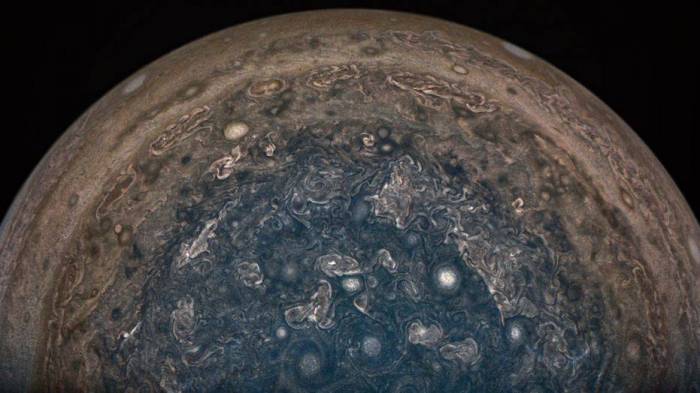Super-Earths are planets larger than Earth that can reach up to 10 times this planet's mass. Previous research suggests that super-Earths are the most common type of planet.
To shed light on how super-Earths might form, scientists looked at stars that host super-Earths to see how many also possessed Jupiter-like worlds. Specifically, they focused on worlds one-half to 20 times Jupiter's mass at least as far away from their stars as Earth is from the sun — excluding hot Jupiters, which are Jupiter-size planets that orbit closer to their stars than Mercury does with the sun. They also compared the prevalence of Jupiter-like worlds around systems without super-Earths.
Many prior studies have suggested that Jupiter has greatly influenced the evolution of the solar system. For example, as Jupiter orbited the newborn sun, it likely carved a gap in the protoplanetary disk of gas and dust that surrounded the infant star, limiting the amount of solid matter that could have spiraled from the outer solar system into the inner solar system to form the planets there. Jupiter's strong gravity may also have disrupted the orbits of nascent planets, potentially even hurling them into interstellar space.
"A number of great recent theoretical studies have suggested that Jupiter analogues might hinder super-Earth formation," study lead author Marta Bryan, an astrophysicist at the California Institute of Technology in Pasadena, told Space.com.
However, the researchers found that Jupiter-like planets are apparently not less common around stars hosting super-Earths than they are stars without super-Earths, but more common.
"Jupiter analogues may be either actively helping super-Earth formation or may be signposts of favorable conditions for super-Earth formation," Bryan said. "For instance, the presence of a Jupiter analogue may indicate the star's protoplanetary disk had more solid material, and more solid material could have led to super-Earths forming."
"Our solar system is odd for not hosting a super-Earth, since it's the most common type of planet, and now we find that it's also odd for not having a super-Earth despite having a Jupiter," Bryan said. "This suggests our own Jupiter may have influenced terrestrial planet formation in an atypical fashion."
A recent study suggested that our solar system may not host super-Earths because Jupiter migrated from about 6 astronomical units (AU) from the sun to 1.5 AU and then back out again, accompanied by Saturn leading a great deal of solid material to fall onto the sun, Bryan said. (One AU is the average distance between Earth and the sun — about 93 million miles, or 150 million km.)
"Our findings suggest that perhaps this kind of long-range migration isn't common," Bryan said.
The scientists detailed their findings in a study submitted June 22 to The Astronomical Journal.
More about: #science
















































